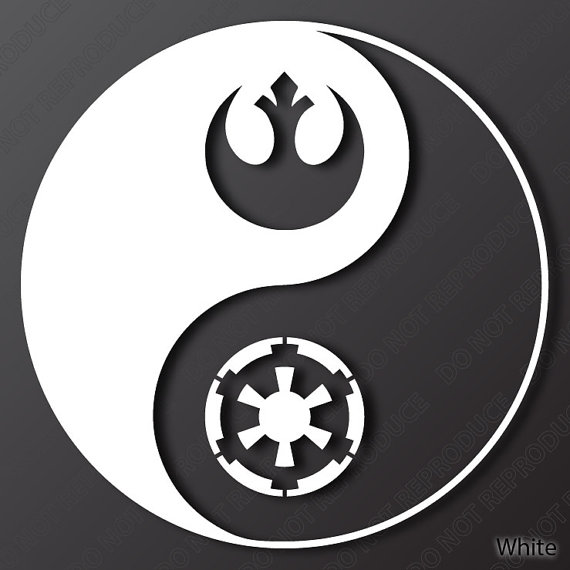
A (female) friend of mine loved Rogue One, but noted an imbalance in the Force:
Wept tears of joy. And not to nitpick the film’s clear feminist intentions, but couldn’t at least a handful of the nameless cannon-fodder strike force be women?
The ramblings that follow began as a long-winded reply, but grew so unwieldy and disorganized that I decided it fit better here 🙂 Spoilers may follow.
I thought the gender distributions were significant and consistent with the themes of Balance in the Force, and the tension between Dar and Light, in the movie canon to date. The Empire was entirely male – scientists, warriors, leaders. The Rebellion has women in elite warrior roles (pilots) alongside men, but political leadership is always female, and heroes are equally female (Leia, Rey, and Jyn vs Luke, Finn, and Solo, though the latter was usually just plot catalyst). The Rebellion’s leadership from Mon Mothma to Leia has been female, but the Republic during the Clone Wars was male-led, even before Palpatine (though the Senate had prominent female members). The villains have always been male, with the exception of the Seventh Sister from Rebels (but Rebels is a true ensemble cast and will skew the analysis).
These themes broadly translate as fear and anger (the Dark Side) being male and hope and love (The Light Side) as being balanced, but female-oriented (I almost used the word bias, in the statistical sense, but that word carries political connotations which would ruin my attempt here at a symbolic analysis). The Force seeks balance between the dark and light, ie between male and female, which means that the Rebellion/New Republic/Resistance have always been inherently closer to that balance (and notably, the Old Republic was not).
Galactic politics being what they are, we haven’t see a true imbalance towards the female/light analogous to the male/dark side yet, though if you look at the Jedi Order’s philosophies in their prime you can get a sense of what it would be like if they wielded political power as rulers: a very structured society where the Jedi see themselves as “mother” doing what is best to protect their “children” with no real respect for agency, exactly as a mother attends to her baby. The difference between the Jedis’ philosophy and a paternalistic one is that paternalism demands respect and obedience, with the implicit assumption of rationality: you must obey because you must concede to the authority (and power). Maternalism on the other hand has an implicit assumption of irrationality: you don’t know any better so I am going to take care of you. The conversation Yoda has with Anakin in Episode 3 is a classic example. It is easy to see how the Jedi Order could transmute into a wholly different sort of tyranny than the Empire, if it were to rule.
If anything, the purpose of Rogue One was to show that the Rebellion is truer to balance – a zone of gray – rather than purely light or dark. It showed a brutal and desperate side to the various rebel cells that had to have been there all along on the ground, obscured from view behind flowing white robes. But that is what balance is. The Rebellion has the convenient excuse of fighting against an implacable evil, but that doesn’t automatically make them scions of the Light – like the Jedi were – and they shouldn’t be, because if they had tried, they would have failed just like the Jedi did against the Dark.

Good insight. To add, I concur to that the Force can be seen as more than just dark and light or good vs. evil. Star Wars mythology has shown us that the Force exists throughout entire Star Wars galaxy and goes beyond just Jedi and Sith. In the Clone Wars animated series you had the characters like the night sisters who tapped into the magical wielding elements of the dark side of the force but were neither good or evil. In the Rebels animated series we have the Bendu character who is a force sensitive individual who actually lies in between the dark side and the light side (in the “center of the force”). Lastly, even Rogue One has a character (Chirrut) who is not a force wielder but is a true believer of the Force and understands its cosmic power.
agreed! in fact you coudl argue that the stratification of Dar and Light was one invented by the Jedi and Sith themselves. Of course, being so predominant, their terminology was adopted by other force wielding entities, but there really need not be any objective truth to a Dark/Light duality. “balance” would then just be a rejection of the natural Force from being artificially constrained into these unnatural categories. a great many truths we have taken for granted seem to depend on our point of view…